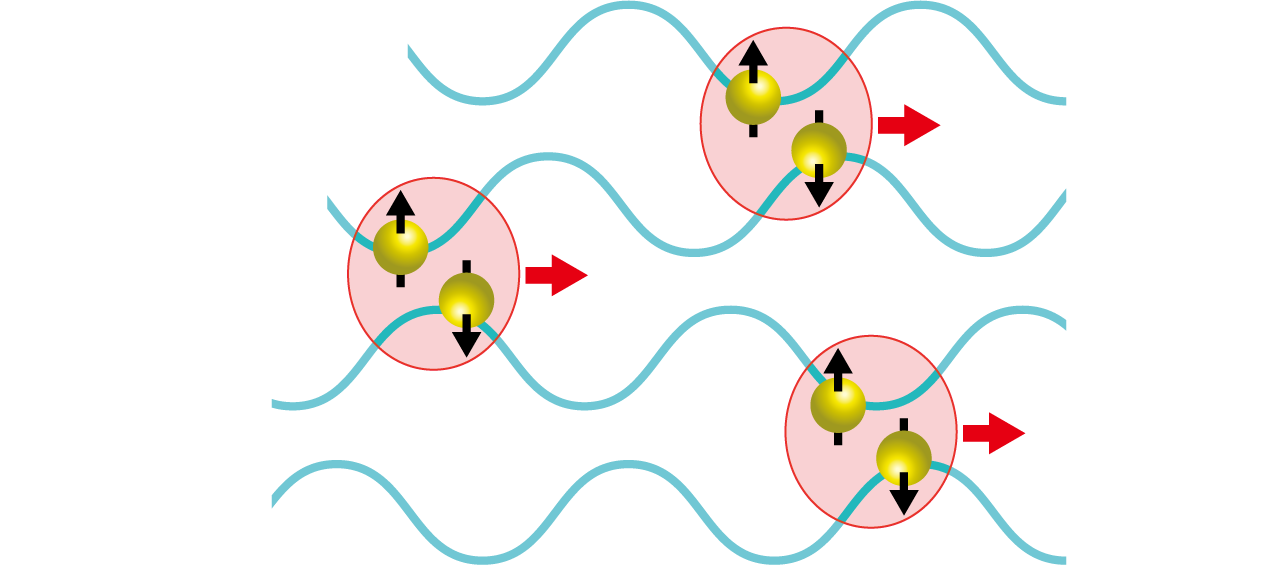
Fig.3-9 Schematic of superconductivity
 ). At low energies, electrons are bound into so-called Cooper pairs (a pair is surrounded by the red circle) and become superconducting by flowing (
). At low energies, electrons are bound into so-called Cooper pairs (a pair is surrounded by the red circle) and become superconducting by flowing ( ) like a wave (~). The electron spins in a Cooper pair usually face each other in a staggered direction.
) like a wave (~). The electron spins in a Cooper pair usually face each other in a staggered direction.

Fig.3-10 Behavior of Cooper pairs under a magnetic field (—)
Superconductivity, the state of zero electrical resistance and repulsion of magnetic fields, is expected to be exploited in a wide range of applications, such as superconducting (SC) power transmission and linear motor cars. However, superconductivity requires a very low temperature and is usually overcome and easily destroyed by a magnetic field. These properties inhibit the wider practical applicability of superconductivity. Therefore, many researches are pursuing superconductors with higher transition temperatures and stronger resistance to magnetic fields than standard superconductors.
We are actively researching the SC mechanism of the uranium compound URu2Si2, which is a superconductor with extreme strength against magnetic fields. However, as this compound is radioactive, sufficiently accurate experiments have been precluded by the stringent handling restrictions. At the JAEA facility, we synthesized an ultra-pure single crystal of URu2Si2 and formed it into a shape suitable for measurement. Thus, we measured (to the highest precision worldwide) the nuclear magnetic resonance in the SC state of the uranium compound at cryogenic temperatures. Nuclear magnetic resonance microscopically examines the electrons around nuclei through their magnet-like property (spin), thereby revealing the electronic states of the superconductivity.
Electrons in materials have a magnet-like property called electron spin, which is randomly oriented in the normal state. When an attractive force dominates between two electrons at low temperatures, the electrons form Cooper pairs with their spins coupled in antiparallel directions. Cooper pairs enter the SC state by creating aligned wave-like states (Fig.3-9). Under a strong magnetic field, the electron spins in a Cooper pair reorient in the direction of the magnetic field, breaking the pairing and hence the superconductivity (Fig.3-10(a)). However, our high-resolution nuclear magnetic resonance measurements of URu2Si2 demonstrated that in this compound, the uniaxial orientation of the electron spins is robust with respect to the magnetic field, meaning that the superconductivity survives in a strong magnetic field (Fig.3-10(b)). This achievement is expected to deepen our understanding of superconductivity and provide guidelines for exploring more practical superconductors.
This work was supported by the Japan Society for the Promotion of Science (JSPS) KAKENHI Grant-in-Aid for Young Scientists (B) (No.16K17757).